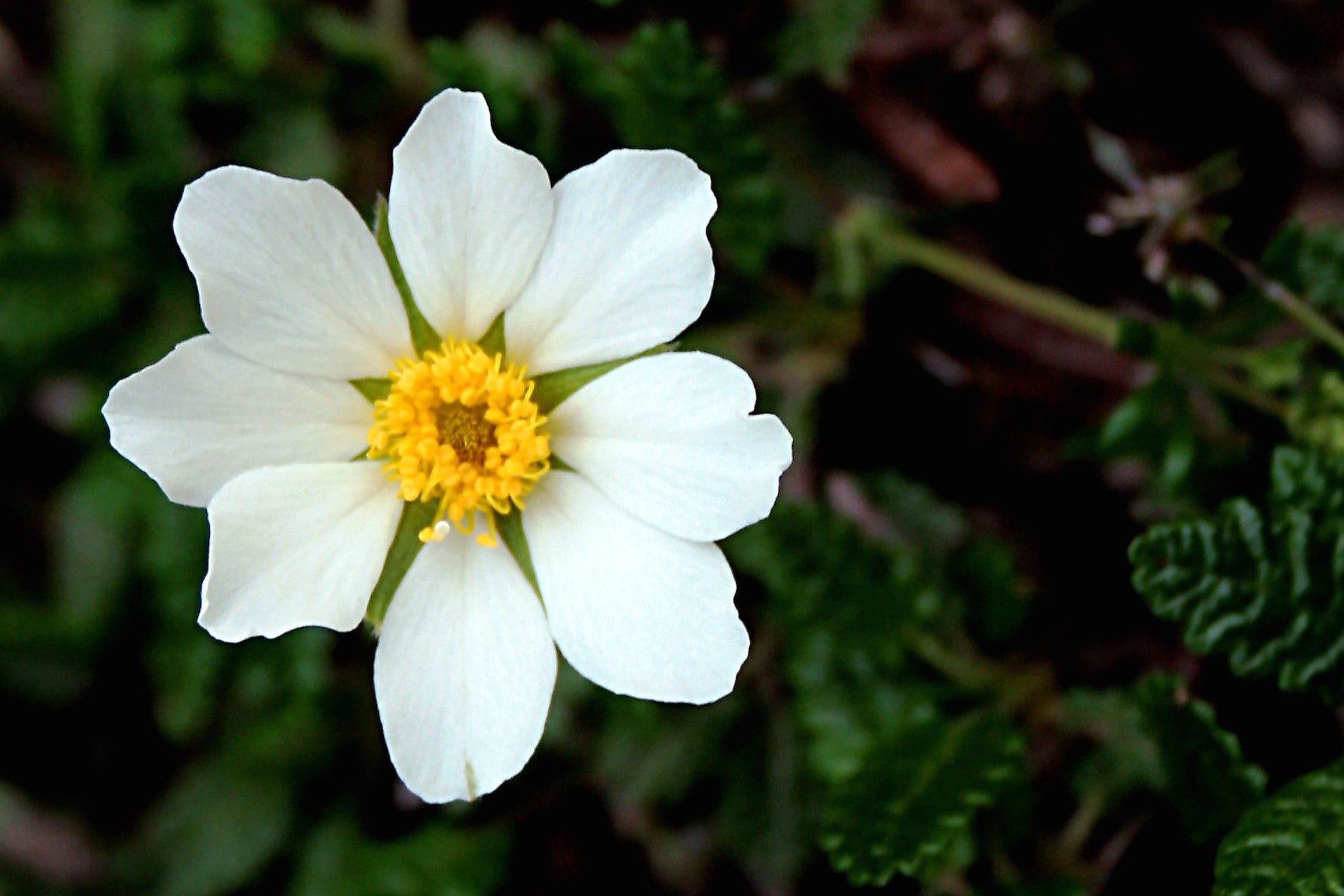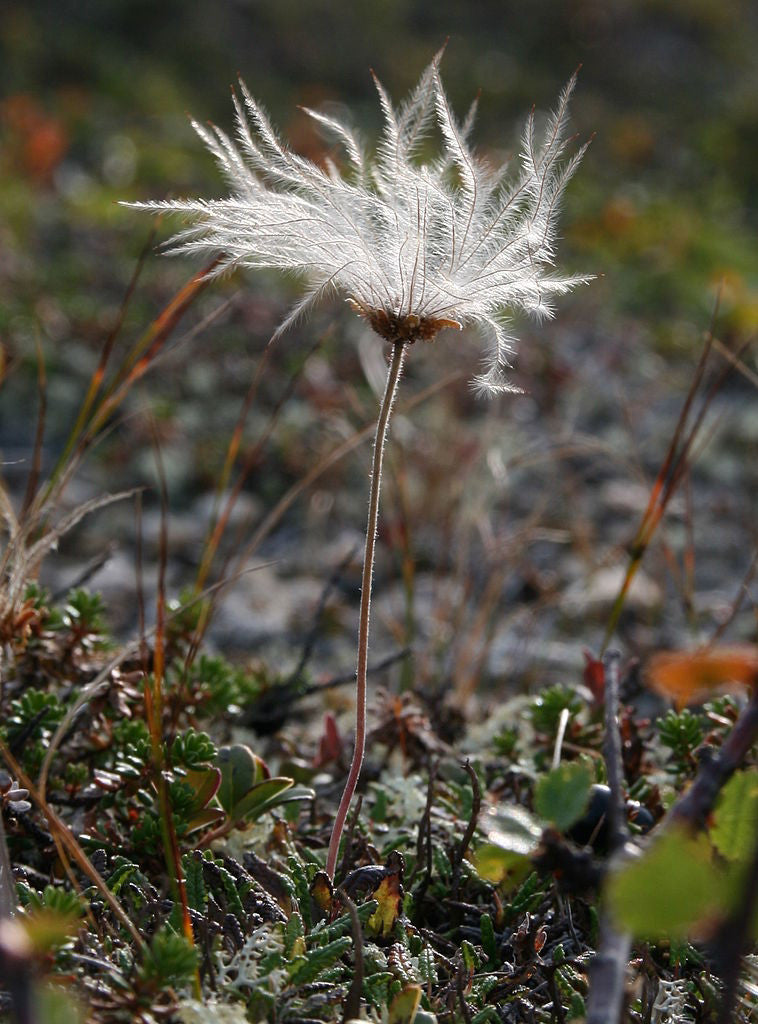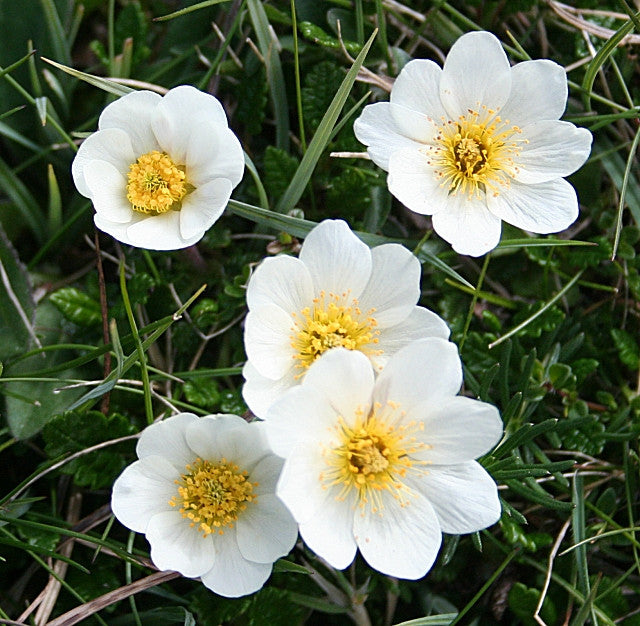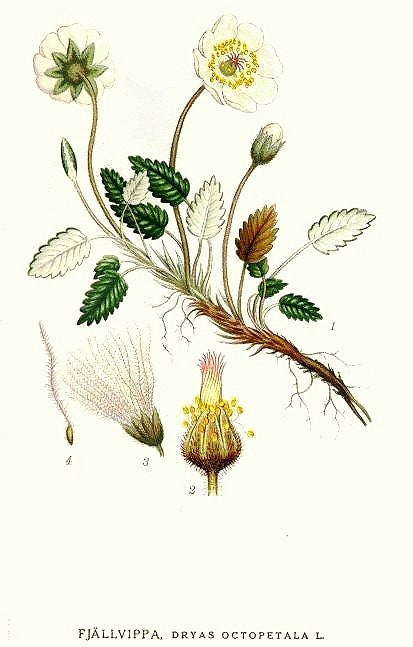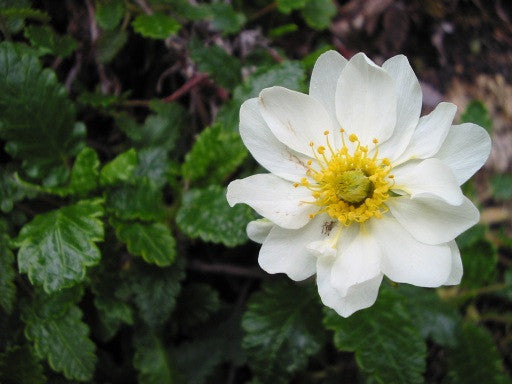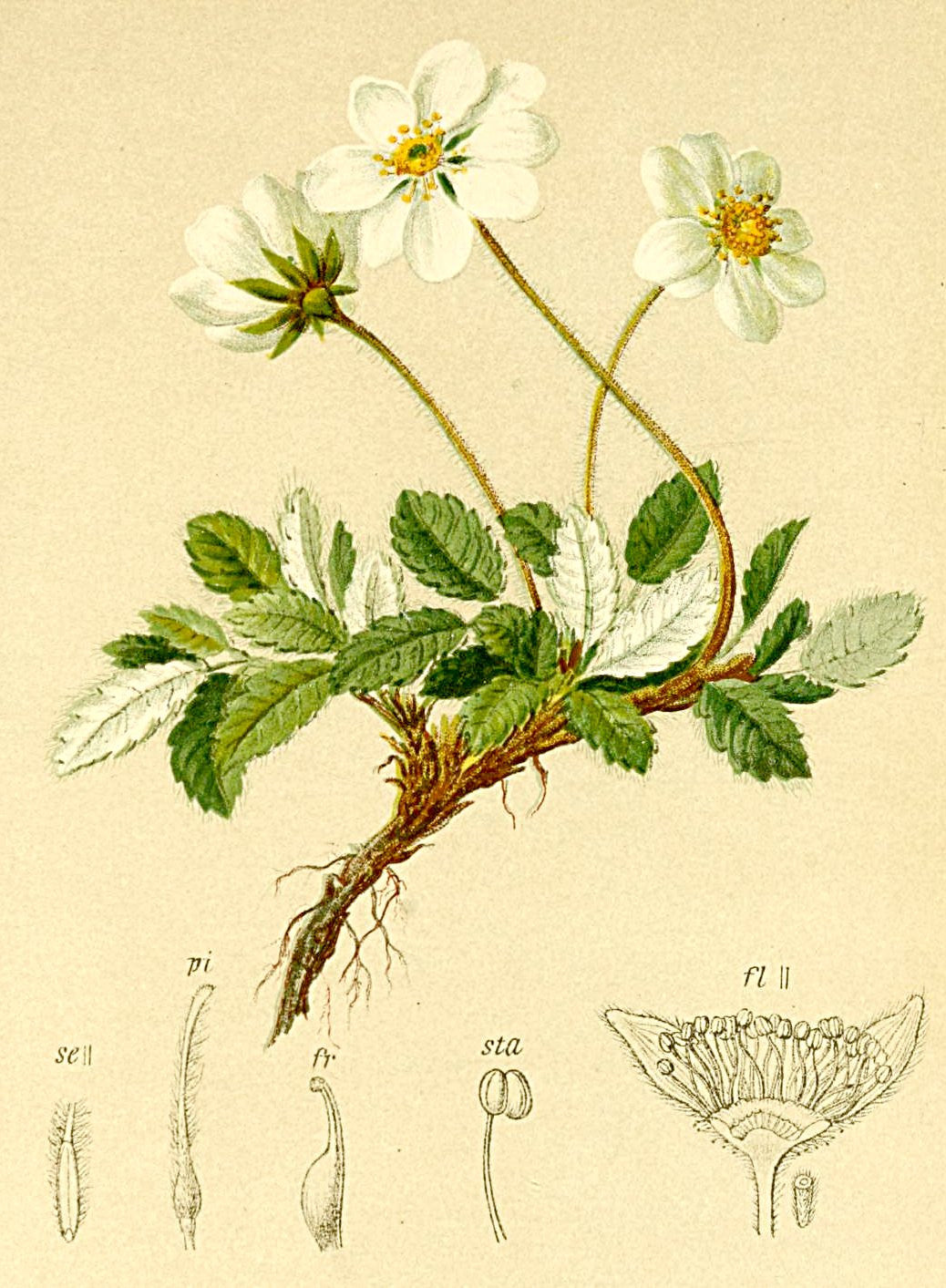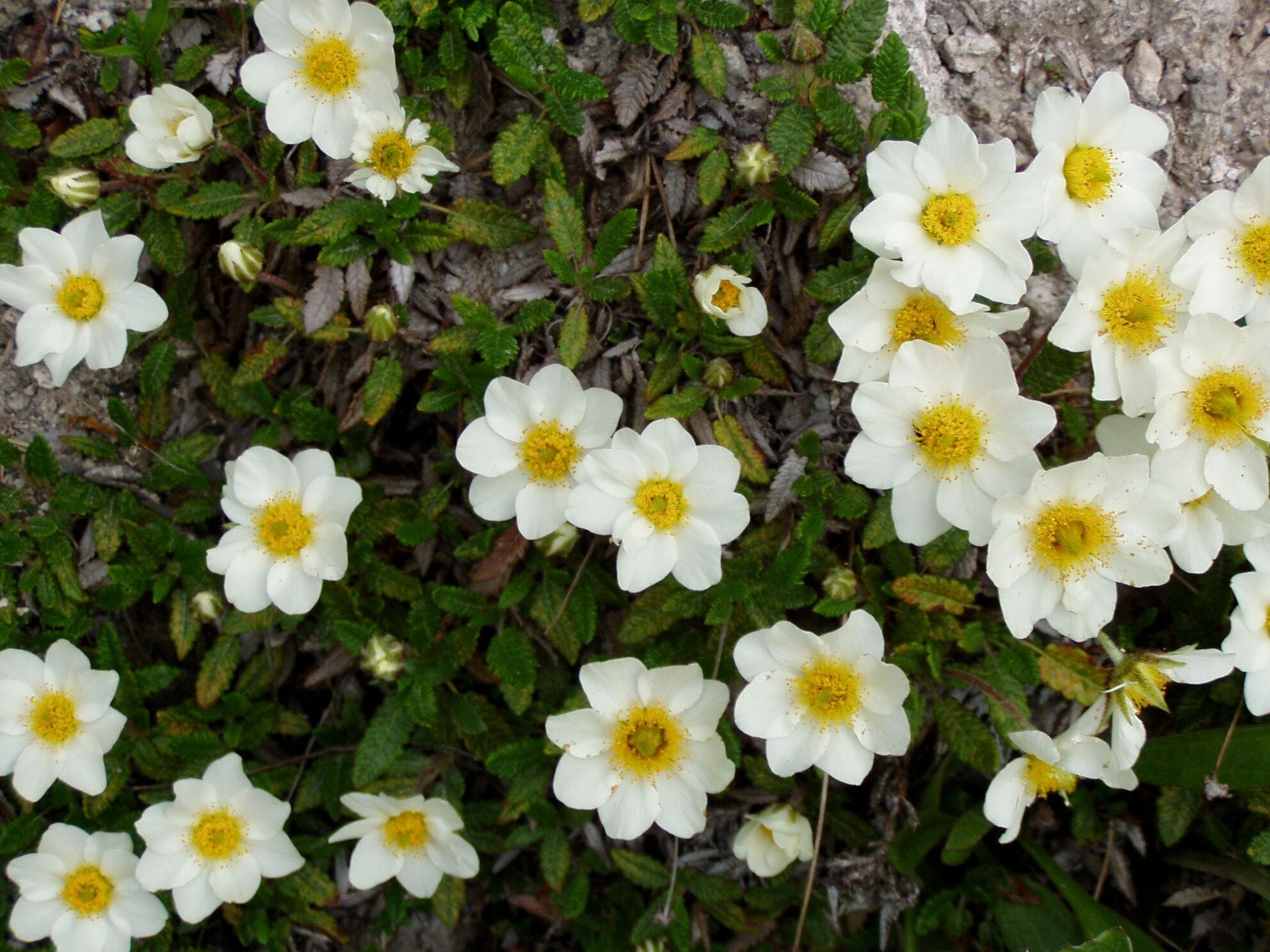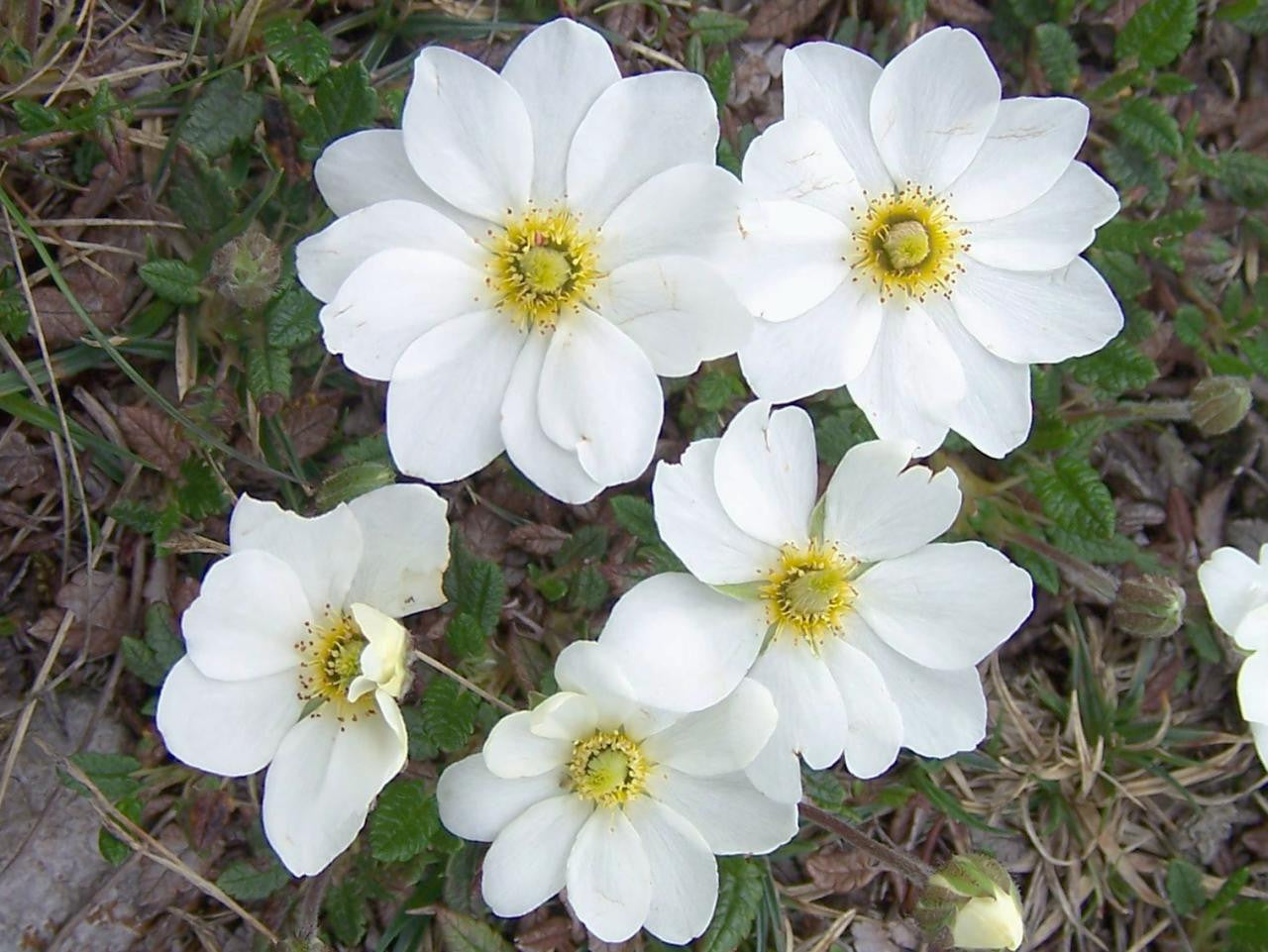Dryas octopetala
Approx. 0.5 litre pot
About this cultivar:
Dryas octopetala (common names include mountain avens, eightpetal mountain-avens, white dryas, and white dryad) is an Arctic–alpine flowering plant. Described botanically by Carl Linnaeus in 1753 it is a small prostrate evergreen subshrub forming large colonies. The specific epithet octopetala derives from the Greek octo (eight) and petalon (petal), referring to the eight petals of the white flower, an unusual number in the Rosaceae, where five is the normal number. However, flowers with up to 16 petals also occur naturally. The style is persistent on the fruit with white feathery hairs, functioning as a wind-dispersal agent. The feathery hairs of the seed head first appear twisted together and glossy before spreading out to an expanded ball which the wind quickly disperses.
This plant seems as old as time itself - no garden should be without it...
- Position: Full sun, partial shade
- Soil: Almost any soil, grows well in Ballyrobert
- Flowers: June, July, August
- Other features: Grows well in Ballyrobert, Royal Horticultural Society Award of Garden Merit (RHS AGM), Great Ground Cover
- Hardiness: Fully hardy - grows well in Ballyrobert!
- Habit: Mat forming
- Foliage: Evergreen
- Height: 0 - 10 cm (0 - 0.3 ft)
- Spread: 60 - 90 cm (2 - 3 ft)
- Time to full growth: 5 to 10 years
- Plant type: Herbaceous Perennial, Alpine or Rockery
- Colour: Green, white, yellow
- Goes well with: -
About this genus:
Dryas is a genus of perennial cushion-forming evergreen dwarf shrubs in the family Rosaceae (the rose family), native to the arctic and alpine regions of Europe, Asia and North America. The classification of Dryas within the Rosaceae has been unclear. The genus was formerly placed in the subfamily Rosoideae, but is now placed in subfamily Dryadoideae.
The genus is named after the Greek word for Oak-nymph (in Greek drys signifies "oak.") Dryads, like all nymphs, were supernaturally long-lived and tied to their homes, but some were a step beyond most nymphs. These were the hamadryads who were an integral part of their trees, such that if the tree died, the hamadryad associated with it died as well. For these reasons, dryads and the Greek gods punished any mortals who harmed trees without first propitiating the tree-nymphs. This long life has lead to the associated naming of geological periods! The Younger Dryas and Older Dryas stadials are geological periods of cold temperature that are named after Dryas octopetala, which flourished during that time and is used as a fossil indicator of those periods.
Dryas is the clan badge of Clan MacNeil of Scotland. Presumably they want to be seen as long lived?!?!
Dryads are mentioned in Milton's Paradise Lost, in The Chronicles of Narnia by C.S. Lewis, in the works of Coleridge, and in Thackeray's novel The Virginians. The poets Keats, Davidson, and Sylvia Plath where also dedicated to Dryas
In the garden dryas species are superficially similar to Geum, Potentilla and Fragaria, but are distinct in having flowers with eight petals (rarely seven or up to ten), instead of the five petals found in most other genera in the Rosaceae. The flowers are erect and white with a yellow centre (Dryas integrifolia, Dryas octopetala) or pendulous and all-yellow (Dryas drummondii), and held conspicuously above the small plants. The hybrid has pale yellow flowers. This makes them very popular in rockeries and alpine gardens.
Dryas is found in wide variety of habitats, including alpine situations with sand or gravel substrate, similar substrates in flat tundra lowlands, and also fen habitats upon organic substrate where some shading from adjacent sedges or shrubs may occur. They grow almost anywhere!

